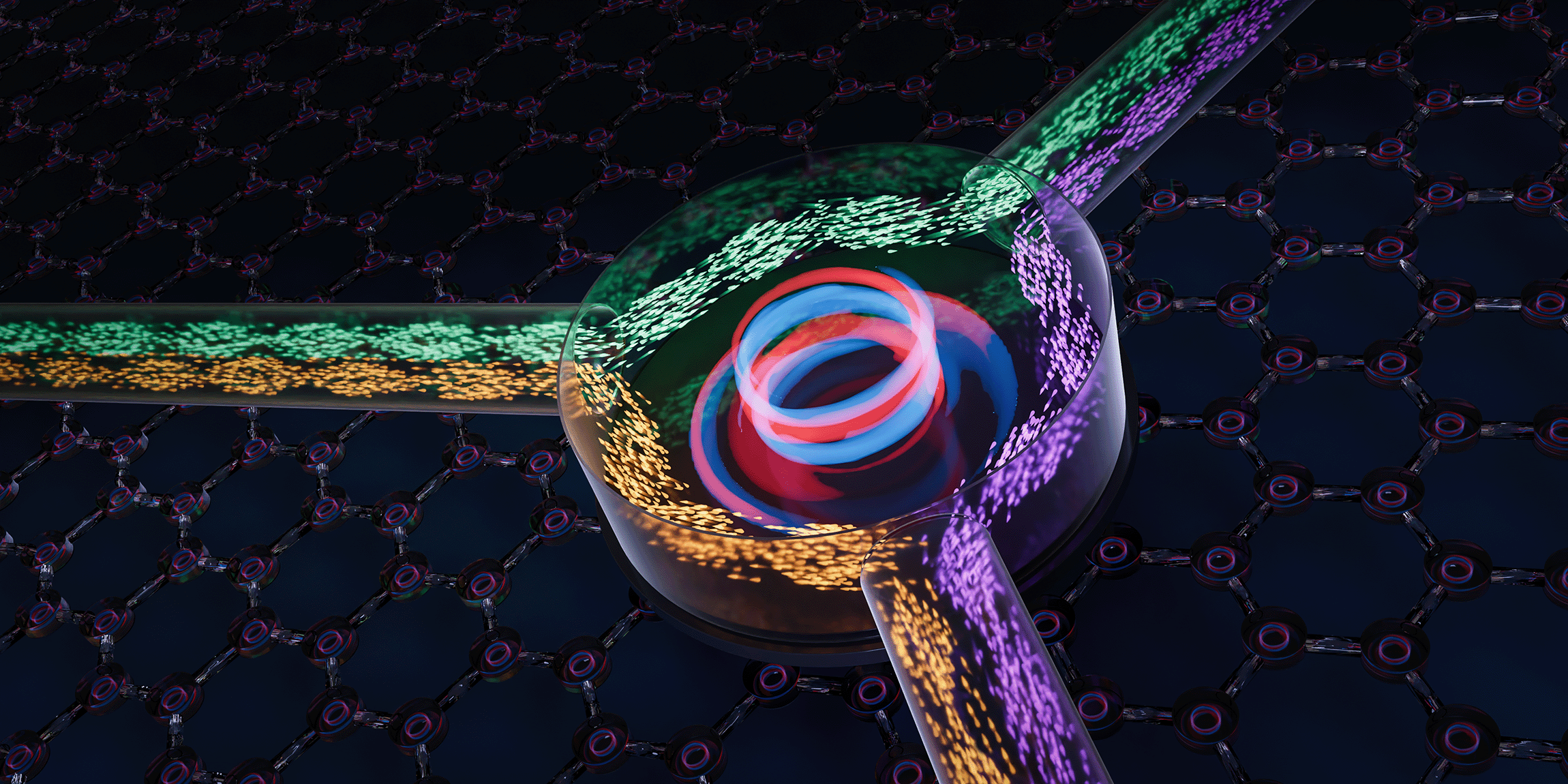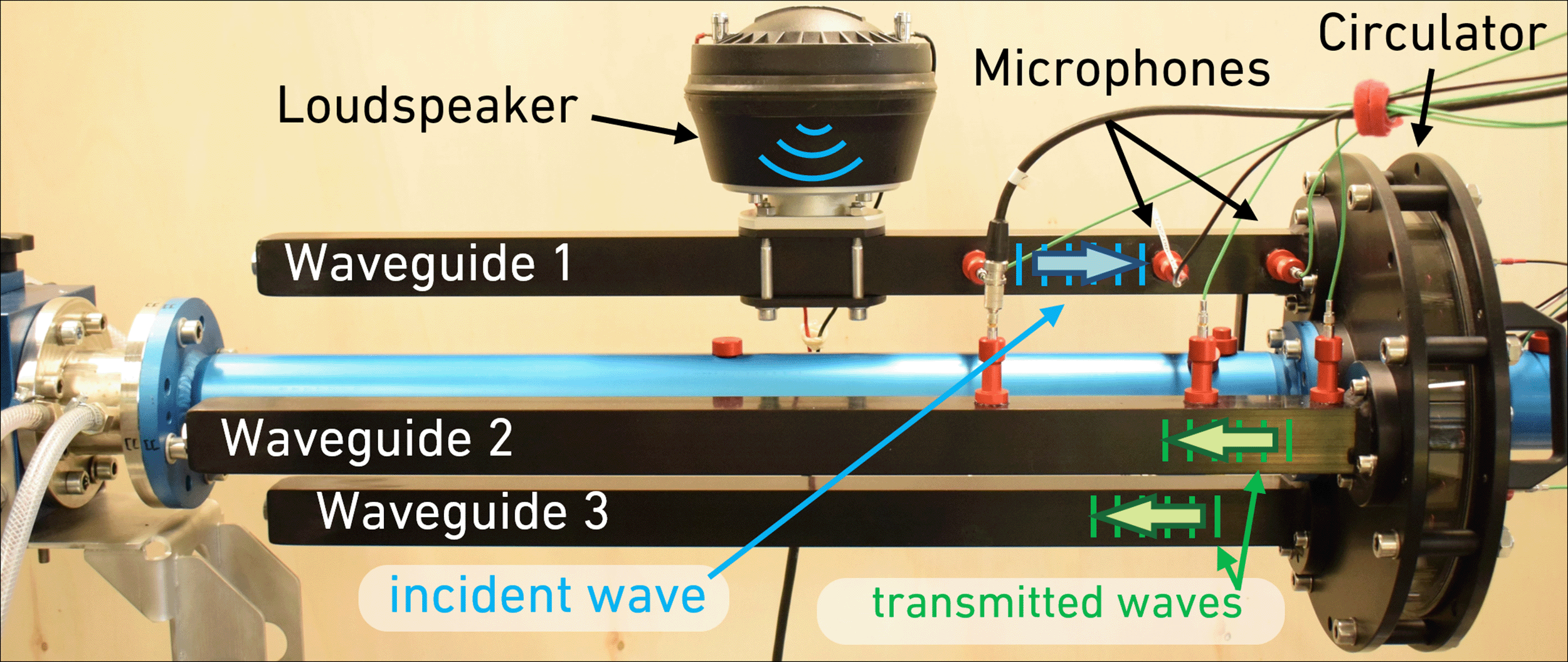Researchers at ETH Zurich have managed to make sound waves travel only in one direction. In the future, this method could also be used in technical applications with electromagnetic waves.

In brief
- Sound and other waves usually propagate equally forwards and backwards.
- Researchers have now developed a method that prevents sound waves from travelling backwards without deteriorating their propagation in the forward direction.
- In the future, this method could also be applied to electromagnetic waves, for instance in radar technology.
Be it water, light or sound: waves usually propagate in the same way forwards as in the backward direction. As a consequence, when we are speaking to someone standing some distance away from us, that person can hear us as well as we can hear them. This is useful when having a conversation, but in some technical applications one would prefer the waves to be able to travel only in one direction - for instance, in order to avoid unwanted reflections of light or microwaves.
For sound waves, ten years ago researchers succeeded in suppressing their propagation in the backward direction; however, this also attenuated the waves travelling forwards. A team of researchers at ETH Zurich led by Nicolas Noiray, professor for Combustion, Acoustics and Flow Physics, in collaboration with Romain Fleury at EPFL, has now developed a method for preventing sound waves from travelling backwards without deteriorating their propagation in the forward direction. In the future, this method, which has recently been published in the scientific journal external pageNature Communications, could also be applied to electromagnetic waves.
The basis of this one-way street for sound waves are self-oscillations, in which a dynamical system periodically repeats its behaviour. "I've actually spent a good part of my career preventing such phenomena", says Noiray. Amongst other things, he studies how self-sustaining thermo-acoustic oscillations can arise from the interplay between sound waves and flames in the combustion chamber of an aircraft engine, which can lead to dangerous vibrations. In the worst case, these vibrations can destroy the engine.
Harmless and useful self-oscillations
Noiray had the idea to use harmless self-sustaining aero-acoustic oscillations in order to allow sound waves to pass only in one direction and without any losses through a so-called circulator. In his scheme, the unavoidable attenuation of the sound waves is compensated by the self-oscillations in the circulator synchronizing with the incoming waves, which allows them to gain energy from those oscillations. The circulator itself was supposed to consist of a disk-shaped cavity through which swirling air is blown from one side through an opening in its centre. For a specific combination of blowing speed and intensity of the swirl, a whistling sound is thus created in the cavity. "In contrast to ordinary whistles, in which sound is created by a standing wave in the cavity, in this new whistle it results from a spinning wave", explains Tiemo Pedergnana, a former doctoral student in Noiray's group and lead author of the study.
From the idea to the experiment it took a while: First, Noiray and his co-workers investigated the fluid mechanics of the spinning wave whistle, and then added three acoustic waveguides to it, which are arranged in a triangular shape along the edge of the circulator. Sound waves that are fed in through the first waveguide can leave the circulator through the second waveguide. However, a wave entering through the second waveguide cannot exit "backwards" through the first waveguide, but can do so through the third waveguide.
Sound waves as a toy model
Over several years, the ETH researchers developed and theoretically modelled the various parts of the circulator; now, finally, they could experimentally demonstrate that their loss-compensation approach works. They sent a sound wave with a frequency of around 800 Hertz (roughly the high g of a soprano) through the first waveguide and measured how well it was transmitted to the second and third waveguides. As expected, the sound wave didn't make it to the third waveguide. From the second waveguide (in the "forward" direction), however, a sound wave emerged that was even stronger than the one originally sent in.
"This concept of loss-compensated non-reciprocal wave propagation is, in our view, an important result that can also be transferred to other systems", says Noiray. He sees his sound wave circulator mainly as a powerful toy model for the general approach of wave manipulation using synchronized self-oscillations that can, for instance, be applied to metamaterials for electromagnetic waves. In this way, microwaves in radar systems could be guided better, and so-called topological circuits could be realized, with which signals can be routed in future communications systems.
Reference
Pedergnana T, Faure-Beaulieu A, Fleury R et al. Loss-compensated non-reciprocal scattering based on synchronization. Nature Communications 15, 7436 (2024). doi: external page10.1038/s41467-024-51373-y








